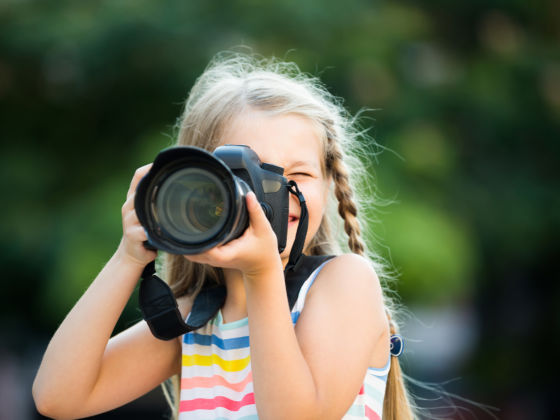APERTURE PRIORITY is marked as Av (Canon) or A (Nikon) on your camera’s dial. When you’re on Aperture Priority, your job is to set the ISO and the Aperture, and the camera will select the appropriate shutter speed for a correct exposure. But what exactly is Aperture, what does it do, and what do all those numbers mean?

The aperture is a hole at the back of your lens. That’s basically it. It’s the “iris” inside your lens, and part of its role is to control the light that hits the sensor. It has blades that can open quite wide, which lets in more light; alternatively, it can be narrowed to a pinpoint, letting in far less light.
The associated numbers pertain to the aperture value (the amount it’s opened or closed), and they get noted in an f-stop. This term is generally taken to mean “focal ratio” or “focal stop,” but there’s actually no one clear reason as to how the name came about. Regardless, the overall range begins with f/1.4 and goes to f/22, but a kit lens normally starts at f/3.5.
If your aperture is opened wide — letting in more light — it has a low f-stop number, such as f/1.4 or f/2.8. When the aperture is narrowed, it has a higher f-stop, such as f/11, f/16, or upward to f/22. Most beginning photographers get confused by these numbers because they feel backwards. It takes a bit of time to get used to.
As with all semi-manual modes, the camera will compensate for whatever choice you make, as much as it can. In other words, your shots will be correctly exposed in Aperture Priority because the camera will pick an appropriate shutter speed to match. So why make aperture your priority? Because aside from letting in more light, the aperture also controls the depth of field in an image — that is, how much focus will be in your picture.
Initially you may think, “Uh…but I want my whole picture to be in focus.” You’ll see quickly why that’s not true. When the aperture is narrow (higher numbers), more of the image is in focus, regardless of how close or far various elements in the picture are. This is also called “large,” “great,” or “deep” depth of field and is used commonly for landscape shots, architecture, or other “scenes” where there’s more than one subject.
Opposite is a large aperture (lower numbers), which causes elements that are in front or behind the selected subject to lose focus. The range of focus becomes smaller as you open the aperture, which is called “shallow” depth of field. This draws the eye directly to your subject and isolates it from the rest of the scene — beneficial, for example, in portraits.
It takes time to learn what kinds of scenes are best shot with which apertures. Are you shooting a cityscape? You probably want more focus for impact. Are you shooting someone’s face? A softer, smaller focus is more pleasing to the eye. But that’s down the road; first you need a grasp on what aperture is and what it’s role is in your photos, and practising is the best way to gain that:
- Shoot a daytime scene. Pick one with a distinct point of focus, like a flower or one particular leaf on a tree, or a friend’s face. You need to pick the same focal point for each photo, and the same focal length (so if you’re zoomed in, stay zoomed in).
- Put your camera on Aperture Priority and set your ISO to Auto (for learning’s sake).
- Start with a high f-stop, like f/22 (if there’s enough light).
- Make sure the camera is focused on your subject. If you know how to manually set your focal point, do that. Otherwise, refocus until your camera picks the right subject.
- Take a photo. Then drop the f-stop down, to something like f/16. Take a shot, and repeat until you are as low as you can get (this depends on your lens).
- Go home and compare all the photos, side by side, and watch your aperture at work.
As you open up your aperture, your subject should get more distinct, while the background becomes more blurred. If you’re working with a kit lens, you probably can’t go lower than f/3.5, but you should still see a huge difference in the images overall. It’s worth noting that shallow depth of field can also be achieved with focal length (zoom) and distance between objects (but that’s another story).
Once you have a grasp on the seemingly backwards numbers and terms, and the role of aperture in your images, you’re ready to actually shoot in Aperture Priority and start taking more control of your photography.
Cheat sheet
| Also called | What’s happening | Corresponding f-stops | Depth of Field | |
| Wide Aperture | Large, Larger, Wide Open, Lower f-stop | More light | f/1.4, f/2.8, f/4, f/5.6 | Shallow, smaller range of focus |
| Narrow Aperture | Small, Smaller, Close, Closed, Higher f-stop | Less light | f/8, f/11, f/16, f/22 | Great, larger range of focus |